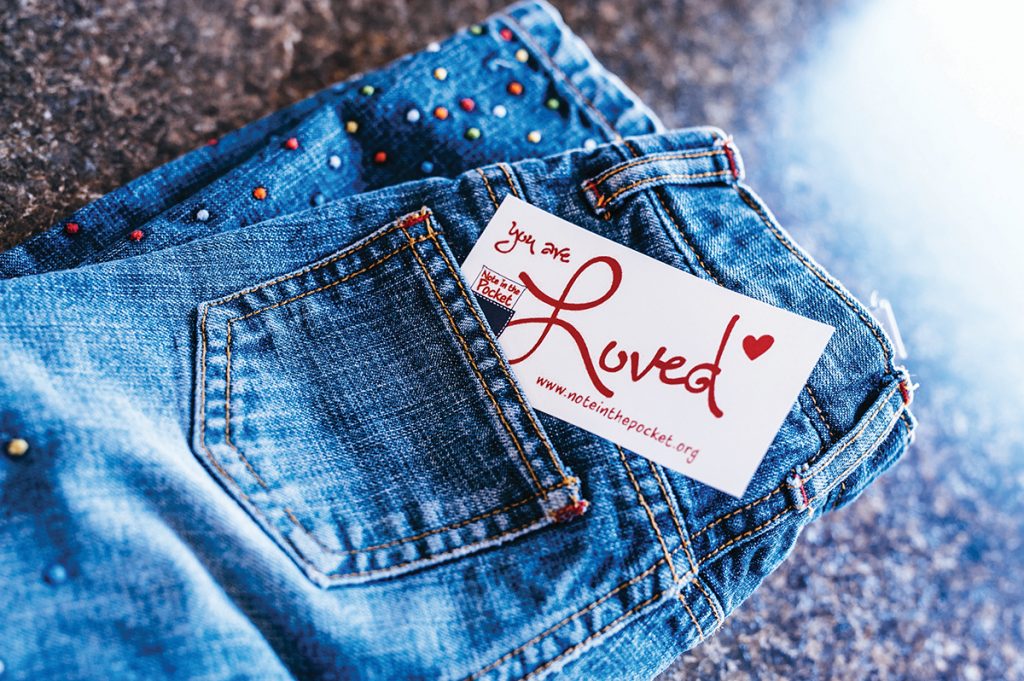Ready to donate your old stuff in 2024? Read this guide first so you can better help our Raleigh-area nonprofits
by Ayn-Monique Klahre
For many of us, January is a month of cleaning out. Often, that means passing along unneeded items from our own homes and trying to get them to folks who can use them — which is great! “The recent economy has only increased the need,” says Susan Meador, volunteer services director for the Inter-Faith Food Shuttle.
To make that goodwill spirit work harder, we asked local nonprofits for tips for how to make in-kind donations as useful as possible. “We are so grateful for all the help we receive through donations and volunteers,” says Dallas Bonavita, executive director of Note in the Pocket, “and with a little knowledge, your donations can go even further.” Here are five tips they shared.
Check the Needs List
Not every organization can use every item you want to donate. The best way to make sure you’re meeting their needs is to check its website ahead of time, as that information is often readily available. “We have a ‘high needs’ list and regularly update it,” says Bonavita. “There are some items, like baby clothes, that people love to donate, but often it’s the less popular items — like adult-size underpants for our middle- and high school-age children — that are overlooked.”
If there’s an organization you know you want to support, take a look at its needs list before your next shopping trip. It’s easy enough to toss in, say, a 12-pack of new socks or some toiletries while you’re already at the store.
Note Donation Times and Accepted Items
While you’re on the website, make sure you pay attention to donation sites and hours, as sometimes they are limited. Leaving a box outside a donation site may seem harmless enough, but inclement weather or critters can ruin perfectly usable goods, even overnight. “We want to respect and honor the resources people are willing to give us, and make sure we can use them to meet community needs,” says Meador.
And be aware that not every drop-off site takes all items. At Note in the Pocket, for example, “we provide clothing, but we don’t provide dishes,” says Bonavita, noting that the Missions Thrift Store next door collects household items. “You may have to make two trips, but it’s so much better for both of our organizations, so we hope you make the extra effort.”
To cut down on trips, consider divvying up your trips by category or pooling donations with neighbors. (As a bonus, the accountability of committing to dropping off someone else’s stuff can motivate you to do it sooner.)
Label Your Items
Remember that someone has to go through every bag you drop off, so a little organization on the front end can be a big help. “We are happy to get all the clothes, for any age or adults, but if you sort your bags by season and label them, that is a huge help,” Bonavita says.
For example, if bags are labeled “summer” versus “winter” clothes, the team at Note in the Pocket will prioritize the items families can use right now and set aside other bags for a less busy time.
Be Realistic
Just because you’re ready to move along something that’s been well-loved, like outdated kids’ toys or an old sweater, doesn’t mean a stranger wants it. “Our standard is: If you would be happy to receive it as a gift or proud to give it as a gift, we want that donation,” says Bonavita, who recently gave a TEDx talk highlighting how we can help clothing insecurity.
For clothing items that are stained, torn, ripped or overworked, place them in a bag marked “recycle” and the volunteers at Note in the Pocket will send them to the textile recycling truck.
For items that have seen heavy use but have sentimental value, offer them to friends or neighbors who would appreciate them. If they’re not sentimental, post them on Freecycle or your neighborhood listserv, or just leave them on a curb with a “free” sign — it’s amazing what gets scooped up!
Turn Goods into Dollars
The one thing that all organizations can put to good use is… a check. But you can still put your secondhand goods to work! If you have designer-brand clothing to pass along, consider consigning it and donating the proceeds. For kids’ items, have your children run a sidewalk sale, with the proceeds going to charity. It’s a great way to pass along items they’ve outgrown and instill the spirit of giving to the next generation at the same time.
A version of this article originally appeared on waltermagazine.com in January 2022. An updated version appeared in the January 2024 issue of WALTER magazine.





